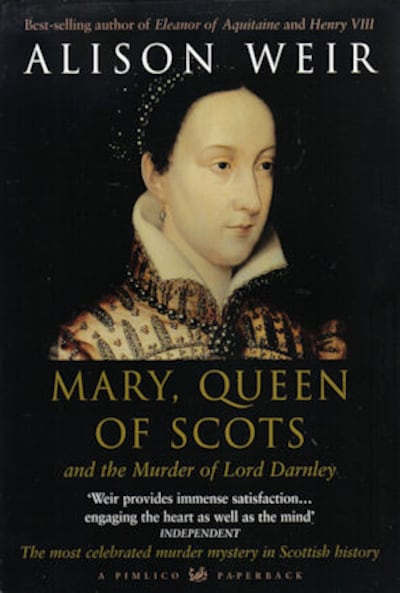It was seeing Saoirse Ronan’s fine performance as Mary, Queen of Scots that sent me back to this book I’d read 15 years ago. What a nest of vipers it reveals; the archest of Shakespearean arch-villains would be in the ha’penny place beside some of them.
The murder of Henry Stuart, Lord Darnley, the husband of Mary, is possibly the most celebrated mystery in Scottish history. Alison Weir forensically and skilfully unravels the mystery, which featured a bewildering range of pretty ghastly characters. Darnley had an unhappy knack of making enemies, so there was no shortage of potential assassins.

As a Catholic queen of a mainly Protestant people, Mary, who returned to Scotland from France aged 18 in 1561, had to perform a delicate balancing act, and her marriage to Darnley four years later upset the balance and led to disaster for both of them.
The marriage brought Mary little joy; he was a most unattractive character, unfit for kingship and certainly unable to give her the vital support she needed. He behaved despicably in the Rizzio murder plot (David Rizzio was the queen’s private secretary and her rumoured lover, though the rumours were most likely baseless), which was aimed at the queen also. He then changed sides, thus signing his death warrant.
Weir undermines accounts – including that of the obnoxious John Knox – that tried to implicate Mary in Darnley’s murder. Not only were the real culprits (William Maitland and James, Earl of Moray, Mary’s half-brother, who masterminded the plot but got others to do the dirty work) guilty of murder and of pinning the fault for the crime on Mary, but they were responsible for “one of the greatest injustices in history”, according to Weir. Their campaign of “baseless and vicious slander” led to her forced abdication, flight to England, 19 years a prisoner of Elizabeth, and her execution.
Politics in the 16th century was highly complex and something of a blood sport. Weir threads her way through the complexity and the gore with aplomb.



















